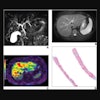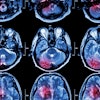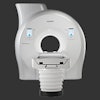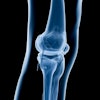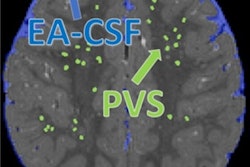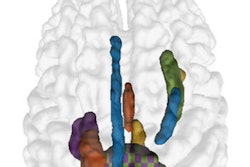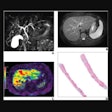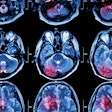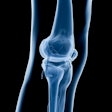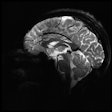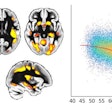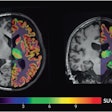
Successful MRI exams in autistic patients require effective communication, training, and adjustments to the scanning environment, according to a May 7 session at the International Society for Magnetic Resonance in Medicine (ISMRM) meeting in London.
Other factors for success include the availability of special educational needs specialists in MRI departments and specific guidance for radiographers in managing exams on autistic patients, according to Nikolaos Stogiannos, an honorary research fellow at City, University of London and a research assistant at University College Cork in Ireland.
"All of these will certainly contribute to a better MRI experience, inclusive MRI environments, and high-volume scans," Stogiannos said in his presentation on the current practice and challenges in the U.K. related to providing MRI to patients with autism.
ISMRM is holding this week's meeting in conjunction with the European Society for Magnetic Resonance in Medicine and Biology and the International Society for MR Radiographers and Technologists.
An overwhelming experience
There are estimated to be over 700,000 people with autism in the U.K. And the noise, isolation, and unfamiliarity of an MRI scanning environment can easily overwhelm both neurotypical and autistic patients, impacting the quality of the exam and the patient's experience, according to Stogiannos.
Although sedation or general anesthesia may be used in autistic patients, those procedures come with their own risks, he said.
"It is therefore vital to explore efficient ways to avoid sedation, improve patient experience and image quality, and increase scan completion rates for a clinically useful examination," Stogiannos said.
To delve into the issues involved with providing MRI exams to autism patients, researchers from the University of London performed three separate studies:
- First, they systematically reviewed studies in the literature describing adjustments made to facilitate MRI in these patients without the use of sedation or anesthesia.
- Next, they surveyed radiographer practitioners in the U.K. to assess current practice for these patients.
- Finally, they performed a cross-sectional survey of autistic patients to explore the perspective of these individuals in the U.K. and to determine the most important barriers and enablers for a successful and safe MRI scan.
Communication, distraction
After analyzing 21 studies in the literature, the researchers found a number of major themes. For example, there's a need for effective communication, including all aspects related to previsits and onsite communication between the radiographers, the MRI department, and the patients, or between the radiographers and the patients' carers, Stogiannos said.
Although identified in the literature as an effective psychology-based intervention, applied behavior analysis is largely condemned by the autistic community as a type of "conversion therapy," he noted.
It's also important to provide adjustments aimed at alleviating the sensory challenges autistic patients may experience before, during, or after the MRI exam.
"To ease any sensory issues, provision of an autism-friendly MRI environment by adjusting the lighting, temperature, acoustic noise, and the number of staff involved was widely recommended," he said. "Ensuring the patient's physical comfort is also essential for a successful examination."
Simulation, familiarization
Another major finding was the benefit of simulation and familiarization techniques, performed both at home and onsite.
"Mock scanning sessions, previsits, some specially designed mobile applications, or audio/visual material sent to the home proved to be highly effective for simulation and familiarization," he said.
Distraction techniques were also widely used, often employing a technology-based aid, Stogiannos said.
"Distraction can be achieved using audio/visual material such as music, movies, and videos during the MRI examination -- if they are MRI compatible and can be safely used by autistic patients," he said.
Scan optimization is also important, according to Stogiannos.
"Radiographers should optimize MRI examinations to reduce motion artifacts by implementing some already established prospective or retrospective techniques, such as motion-tracking devices or dedicated software," he said.
Radiographer survey
In the second phase of their project, the researchers conducted an online survey of 130 radiographers in the U.K. to gain their perspective on performing MRI examinations in autistic patients.
Key findings included the following:
- Seventy-five percent of radiographers had not received autism-related training.
- About 57.1% of radiographers can't confidently recognize an autistic individual.
- The top learning priority for radiographers was understanding patients' needs (90.1%), followed by optimal communication and the ability to deal with challenging behaviors.
- Radiographers are informed about autistic patients most often by the caregiver (70.5%), followed by the patient themselves (26.7%).
- Approximately 8.9% of radiographers were not informed ahead of time about an autistic patient.
"There is a dramatic need for integrating such training within the academic curricula of radiographers," he said.
The most common adjustments made by radiographers for autism patients included adjusted communication, explanation of the exam to the patient and their caregiver(s), adjusted lighting in the room, optimized MRI sequences, and a shorter scan duration, according to Stogiannos.
When asked about the challenging aspects of MRI in autistic patients, the five most common answers were as follows:
- Lack of relevant training and knowledge: 41.5%
- Lack of onsite special educational needs team: 38.6%
- Lack of guidelines to manage the patient: 37.7%
- Lack of collaboration of the patient: 36.7%
- Lack of communication with the patient: 35.8%
The top five aspects cited for facilitating MRI scanning in autistic patients included the following:
- Help from caregiver(s): 73.8%
- Having the extra time required for such patients: 57.6%
- Patient tried to communicate their condition and needs: 45%
- Patient collaborated as much as possible: 43.2%
- Good communication within the healthcare service: 35.1%
Overall, the survey results highlighted the lack of relevant training and knowledge for conducting MRI scans on autistic patients, according to Stogiannos.
"However, the radiography workforce is eager to learn more about autism and the effective management of these patients," he said.
The study also demonstrated the importance of effective communication and developing evidence-based guidelines for radiographers, Stogiannos said.
Patient perspective
In the final phase of their project, the researchers performed an online survey of 128 autistic patients in the U.K. who had received at least one MRI exam. Of these, 112 were autistic adults and 16 were parents from parents or caregivers of autistic children.
Key findings include that:
- Seventy-five percent of autistic adults reported not being asked by the staff about their preferences/needs when booking the MRI exam.
- Previsits were not offered at all, and only leaflets were sent prior to the exam.
- About 29.6% of patients did not receive any information about the exam.
- The respondents noted a general lack of special educational needs specialists.
Furthermore, most autistic individuals reported they were not invited to bring their favorite music or movie with them. And 2 out of 3 patients felt they were not comfortable lying inside the scanner.
"This highlights the need for allocating extra time for positioning and for ensuring the patients' physical comfort, as this was also highlighted in [our] systematic review," he said.
Music, movies, and headphones were also largely not provided, according to the survey. In addition, the vast majority of the respondents indicated that they did not have a way to know how much time was left in the procedure when they were inside the scanner, Stogiannos said.
Overall, the top challenges identified by the patients included:
- Inadequate information received beforehand
- Not enough allocated time for the scan
- Not enough reasonable adjustments during the scan
- Loud acoustic noise
- Physical comfort issues inside the scanner
The top enablers of MRI scanning recommended by the patients included:
- Asking many questions and sharing information
- Better acoustic noise cancellation
- Allowing suitable (nonmetallic) soothing cloth or toys inside the scanner
- Comfortable clothing
- Enough time after the scan to relax
The patients rated their overall MRI experience as average and highlighted many challenges, he said.
"It is imperative to work on some practice accommodations and training to help create inclusive MRI environments for autistic users [and provide] truly patient-centered care," he said.
